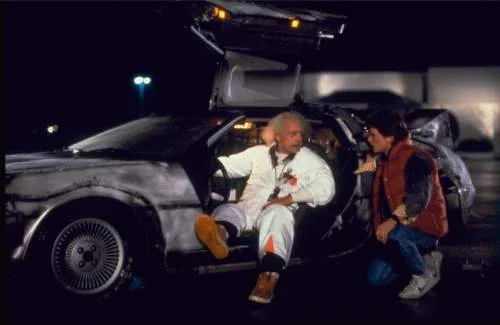For aspiring screenwriters, there’s numerous classes and books you can learn from, and many of them derive the rules of drama from Aristotle who lived thousands of years ago.

While many screenwriters don’t like following rules, they can often be very helpful if applied correctly, and once you learn the rules, well, of course you can always break them.
When Bob Gale was going to film school at USC, he took a famous screenwriting course lead by teacher Irwin Blacker that was also attended by John Milius, screenwriter of Apocalypse Now.
When I asked Gale what he learned from Irwin’s classes that he took with him in his screenwriting career, he told me one of the most important lessons, which he applied very well to Back to the Future, was how to successfully set up suspense in a race against time.
“Blacker always used to refer to High Noon, because he said that a film editor came in and said ‘Geez, you need to keep cutting into that clock.’ If you don’t cut to the clock and you don’t know what time it is, you don’t know how close you are to high noon. There’s no tension, there’s no suspense.
“Another thing that he said is that if at all possible, the first time you see a character, you should know a whole lot about them. You should do something, say something, make an entrance in some way, this is a major character that you just have to know. So he used Jack Palance’s entrance in Shane. He comes walking down the street, the dog runs away from him, and you say ‘Oh sh*t, this is a bad man.'”
Where a lot of screenwriters in training try hard to follow what’s become standard format in storytelling – a three act structure – Gale adds, “We never thought about Back to the Future in traditional quote, unquote ‘Act structure.’ It’s a movie that’s got two stories going on at the same time, a story of Marty and Doc Brown and getting back to the future and the story of Marty and his parents and getting them together. So each of those stories has slightly different climaxes and they meld together, and I always like to remind people that Shakespeare’s plays had five acts.
“And when I took Shakespeare class, we learned about the five act structure, and I don’t know that anybody’s teaching that anymore. But The Godfather is a good example of a movie that fits into a more Shakespearean format, because in Shakespeare there was usually a key event that happens at the midpoint of the story after which everything flowed directly from that. And then one of the greatest movies ever made, Jaws, has two acts: Land and sea.”
As Gale recently told TG, the fact that Back to the Future is coming up on its 27th (!) anniversary, and we’re still talking about it to this day, is pretty cool indeed.
“I love it, are you kidding me?,” Gale says. “It’s amazing enough to have a hit movie, ever, in your career. To have one that has stood the test of time the way Back to the Future seems to have is absolutely amazing… And it’s so gratifying. Everybody loves the story of someone who has a passion project that nobody wants to make, and everybody’s still talking about it decades later.”






